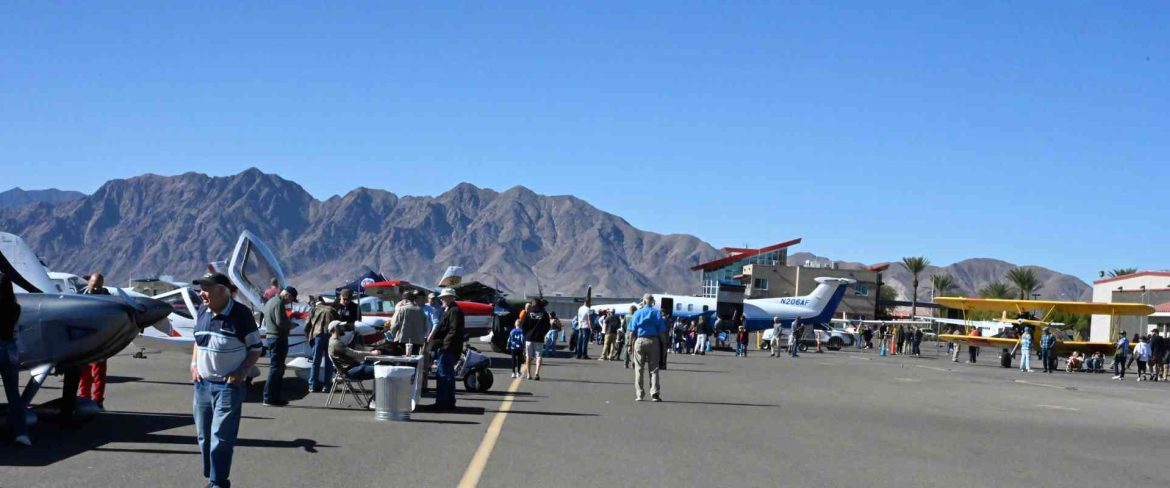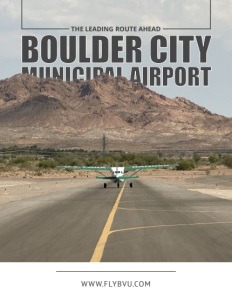The Leading Route Ahead
A Regional Hub Balancing Tourism and General Aviation
As flight and passenger numbers head skyward, select airports have laid the necessary groundwork to ensure they meet the current aviation demand. To remain successful, each airport’s vision must also turn to its future growth and development, both on the airside and non-airside pathways. One such airport is making all the right moves and is firmly focused on what is to come down the runway.
Tucked just outside Las Vegas, Boulder City Municipal Airport serves as a vital gateway for both the local community and millions of visitors drawn to the region’s world-famous landmarks. Unlike larger commercial airports, Boulder City specializes in general aviation and air tourism, balancing the needs of private aircraft owners, aviation businesses, and global travelers heading to the Grand Canyon and beyond.
Under the leadership of Airport Manager Marissa Adou, the airport is undergoing a period of exciting transformation. With demand for hangar space at an all-time high, a new air traffic control tower in the works, and continuous infrastructure upgrades, Boulder City Municipal Airport is positioning itself as a key economic driver for the city and region.
A Unique Operational Mix
Unlike most small airports, Boulder City serves two distinct markets. On one hand, it supports general aviation traffic, including corporate jets, medical flights, aerial firefighting, and private pilots. On the other, it is home to several major air tour companies, including Grand Canyon Airlines and Papillon Air Services, that fly thousands of tourists annually over some of the most iconic scenery in the American West.
“The diversity of our operations is what makes us unique,” Adou explains. “We serve local pilots, business travelers, emergency responders, and tourists from around the world—all within the same facility.”
The airport features two runways and two fixed-base operators (FBOs)—BFE Flight Support and Boulder City Aviation Services—which provide fuel, maintenance, and ground support.
While neither is a full-service FBO in the traditional sense, both rely on partnerships with subsidiaries such as Grand Canyon Airlines for maintenance or SALUS and Black Mountain Avionics for repair and avionics work.
The demand for aircraft maintenance and repair services continues to grow. Adou notes that the airport is actively working to attract additional full-service maintenance and repair operators, particularly for fixed-wing aircraft.
“This is an area of real opportunity,” she says. “With our traffic levels and our central location, we’re in a strong position to support more aviation businesses here.”
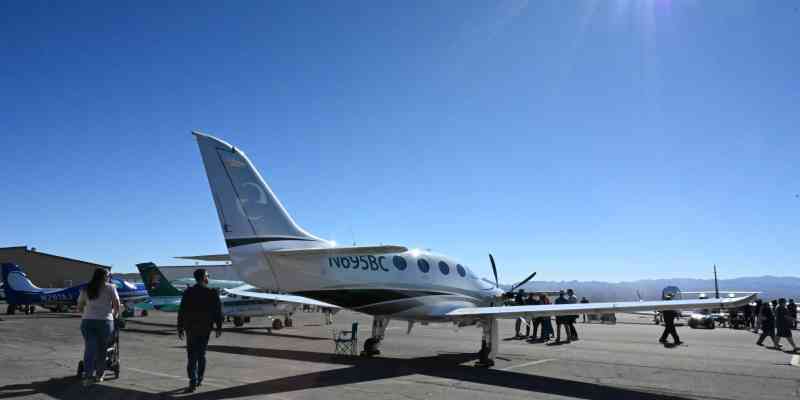
Infrastructure Upgrades and Master Plan
In recent years, Boulder City Municipal Airport has invested heavily in infrastructure upgrades designed to improve safety, efficiency, and sustainability. Adou relays that completed projects include the Realignment of a taxiway to enhance safety. Rehabilitation of the crosswind runway, which is crucial for operations in Southern Nevada’s high winds. Installation of LED lighting across runways and taxiways, reducing energy costs and improving visibility. New transient ramp lighting, making night operations safer and more efficient.
Next on the list for Adou are projects such as a seal coat for the transient ramp and tie-down areas, rehabilitation of a key access road, and eventually, a parallel taxiway to the primary runway.
Above all the necessary work prioritized at the airport, Adou highlights that the centerpiece of the airport’s upcoming infrastructure efforts remains the construction of a new air traffic control tower. “The tower will significantly improve our operational efficiency and safety,” she explains. “It’s a major milestone for an airport of our size.”
Hangar Development: Meeting High Demand
Perhaps the most striking measure of the airport’s growth is the overwhelming demand for hangar space. With more private aircraft owners seeking storage and maintenance facilities, the airport is planning for the development of 100 new hangars.
“We are essentially at full capacity right now,” Adou says. “The demand has been so strong that private developers are looking to invest in new hangar construction. It’s a clear sign of the vitality of our general aviation community.”
This expansion not only supports aircraft owners but also generates revenue for the city, creates jobs, and strengthens Boulder City’s reputation as a welcoming hub for aviation.
Economic Driver for Boulder City
Owned and operated by the City of Boulder City, the airport is deeply tied to local economic development. Connections with the Chamber of Commerce and economic development organizations help ensure that the airport contributes to the city’s broader goals.
With more than 500 acres of land, the airport has space that could accommodate additional airport-community oriented amenities. Ideas under consideration include a restaurant, meeting space, or event venue, adding new amenities for both aviation users and the local community.
“Airports aren’t just about planes taking off and landing,” Adou notes. “They’re about creating opportunities—for tourism, for business, and for the local economy.”
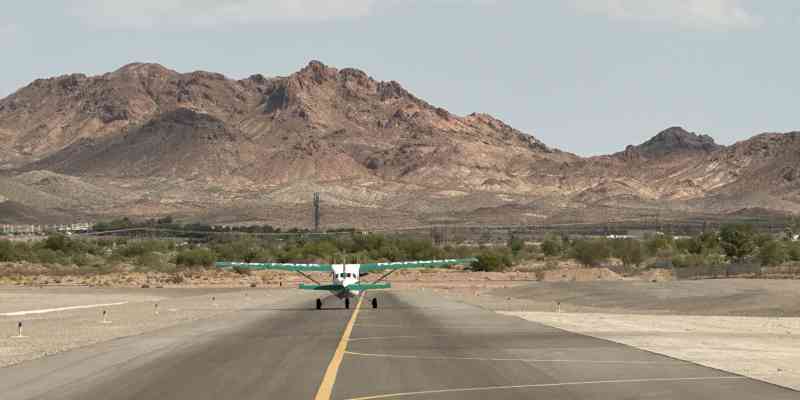
Weather and Operational Resilience
Southern Nevada’s notorious winds present unique operational challenges. Maintaining both the primary and crosswind runways is essential for ensuring reliability.
“Crosswinds are a big part of our environment,” Adou says. “By keeping both runways in excellent condition, we give pilots the flexibility they need to operate safely in all conditions.”
A Vision for the Next 18 to 24 Months
Looking ahead, Boulder City Municipal Airport has an ambitious set of projects and priorities. While some may be completed before others, she mentions a list that will keep the airport busy over the next little while. Making the list, Adou refers to the need to complete the seal coat on the transient ramp and tie-down parking areas, rehabilitate secondary access road for airport operations and tenant access, staff, and service providers, begin construction of the air traffic control tower, a critical investment for growth as well as undertake runway rehabilitation and the development of a parallel taxiway for the primary runway.
Adou is also turning to another project which includes finalizing an agreement for the construction of 100 new hangars and her ongoing exploration for a maintenance provider for the fixed wing community as well as opportunities for new commercial ventures to meet the community needs.
“These projects will position us for the next decade,” Marissa says. “It’s about serving the aviation community we have today while preparing for the growth we know is coming.”
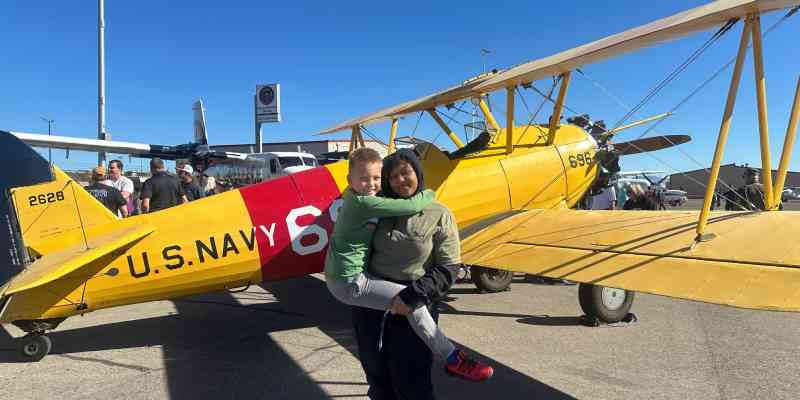
A Personal Journey in Aviation
For Adou, leading Boulder City Municipal Airport is more than a career—it’s a calling. She began flight training at age 15, eventually earning a degree in airport management.
“Aviation has been part of my life for as long as I can remember,” she reflects. “I love the technical side of running an airport, but just as much, I love the human side—connecting people and seeing how aviation impacts lives and communities.”
Adou’s passion is evident in the energy she brings when discussing the airport’s future. Fully committed to her staff and having the experience and knowledge to know what growth for the airport should look like, she is busy getting the job done speaking to all the right people to help her carry out her vision.
A future taking flight
Though not a Part 139 commercial service airport, Boulder City Municipal Airport punches above its weight. By supporting both general aviation and high-volume tourism, it has carved out a unique role in Nevada’s aviation landscape.
With a new air traffic control tower, expanded hangar space, and a vision for commercial development, the airport is not just keeping pace with demand—it is shaping the region’s future.
As Adou sums it up: “Boulder City Airport is a small airport with a big impact and our goal is to serve the community and the aviation industry equally.”
AT A GLANCE:
Name: Boulder City Municipal Airport
What: A thriving, city-run airport with a capital infrastructure plan designed to meet increased aviation demand.
Where: Just outside of Las Vegas, Nevada
Website: www.flybvu.com
PREFERRED VENDORS
Atlas Aircraft Center, Inc. : www.atlasaircraftcenter.com
Atlas Aircraft Center has been a proud part of Boulder City Airport since 2021. The state-of-the art maintenance facility and its highly trained team provide expert maintenance for the growing PlaneSense fractional fleet of Pilatus aircraft operating across the U.S.
